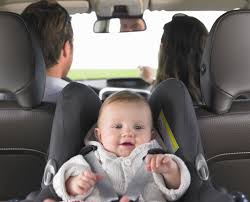Published July 24, 2017


- The American Academy of Pediatrics (AAP) recommends that children 2 years or older, or those younger than 2 who have outgrown the weight or height limits for their rear-facing safety seat, be restrained — in the back seat of the car — in a forward-facing safety seat with a harness for as long as possible, up to the highest weight or height allowed by the manufacturer of the safety seat.
- If you have been using an infant-only child safety seat, you will need a new seat. If you have been using a convertible child safety seat in the rear-facing position, you can still use it but will need to make a few adjustments to the shoulder straps, and re-route the vehicle seat belt or LATCH properly for it to be used forward-facing. Be sure to read your child's safety seat manual to learn what changes need to be made when switching the seat from rear-facing to forward-facing.
- The shoulder straps must be threaded through slots that are at or just above your child’s shoulders. The harness must be snug so you cannot pinch a fold in the harness material after buckling in your child. The straps should lie flat in a straight line without sagging or twisting. The top of the chest clip should be positioned at armpit level.
- You can further optimize the safety of your forward-facing car seat by using its top tether strap located at the top of the seat. Attach the seat's top tether strap to the correct anchor point in the vehicle. Pull to tighten. Check your car owner's manual to identify the correct anchor point.
- You know your child is getting too tall for his forward-facing car seat when the top of his ears reach the top of the seat.
- Switch to a booster seat when your child reaches the weight or height limit of the forward-facing child safety seat, as he is still too small to fit properly in a vehicle safety belt.
Be safe buckle up !
Post Tags:childs car seat
View All Posts

